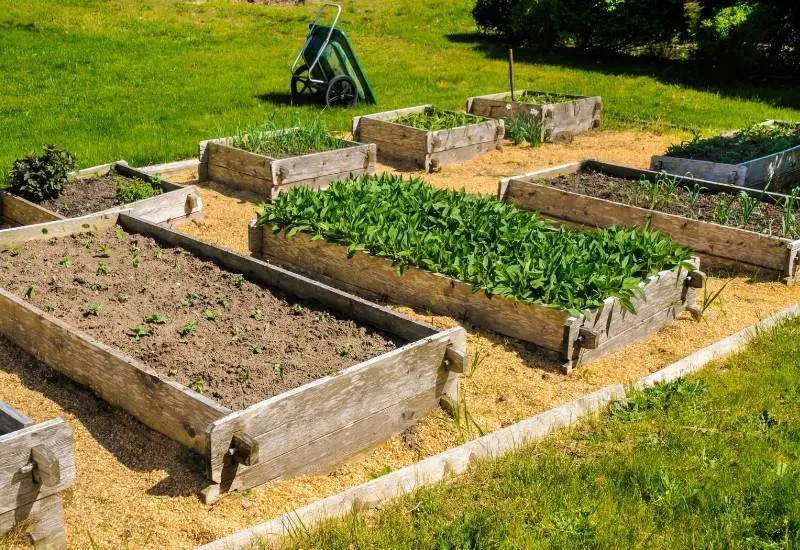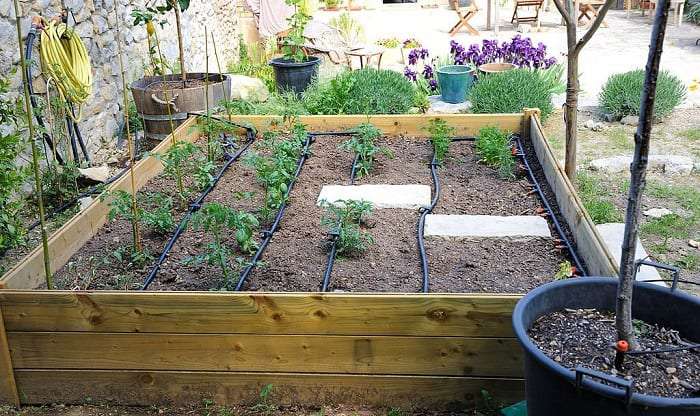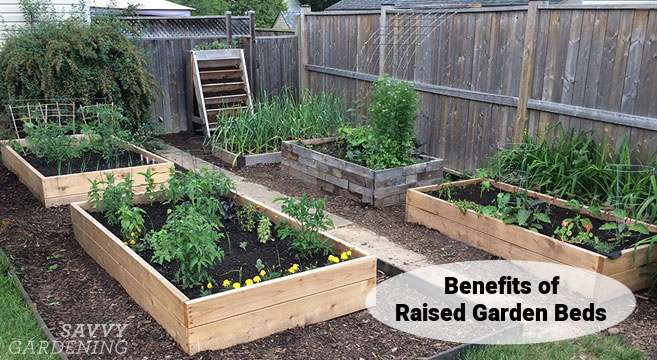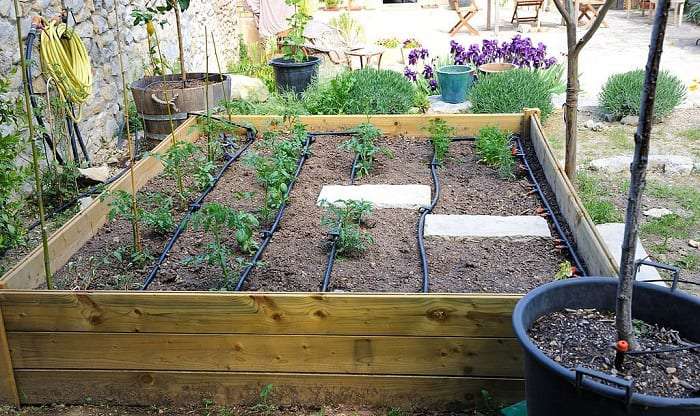When it comes to the health of your plants in a raised garden bed, the bottom layer is crucial. By incorporating organic materials like compost, wood logs, grass clippings, leaves, and cardboard, you can enrich the soil and provide essential nutrients. The type of materials you choose will depend on the desired lifespan of your bed – wood logs for long-lasting beds and quick-decomposing materials for short-term ones. If you have specific problems like weeds or gophers, opt for materials like landscape fabric or gopher wire to protect your plants. Stones, newspaper, and compost are other options for the bottom layer. While sand might seem like a good idea, it can hinder drainage. Ultimately, the choice of materials depends on your garden bed’s unique needs and goals.
Importance of the Bottom Layer in a Raised Garden Bed
When it comes to creating a successful raised garden bed, the bottom layer plays a crucial role in ensuring the health and productivity of your plants. It not only enriches the soil and provides essential nutrients but also helps control weed growth, prevents pests and burrowing animals, and affects drainage. In this article, we will explore each of these aspects in detail, providing you with valuable insights on how to maximize the benefits of the bottom layer in your garden bed.
Enriching Soil and Providing Nutrients
To create a thriving garden bed, it is essential to incorporate organic materials that enrich the soil and provide vital nutrients for your plants. There are several options you can consider for the bottom layer of your raised bed:
Incorporating Organic Materials
One of the best ways to improve the soil fertility is by incorporating organic materials such as compost. Compost is a rich source of nutrients that can promote healthy plant growth. By adding a layer of compost at the bottom of your raised bed, you are replenishing the soil with essential elements that plants need to thrive.
Using Wood Logs
Another effective method to enrich the soil is by adding wood logs at the bottom layer of your garden bed. As the wood logs slowly decompose over time, they release valuable nutrients into the soil, creating a nutrient-rich environment for your plants. This method is particularly beneficial for long-lasting beds.
Utilizing Grass Clippings
If you want to utilize materials readily available in your garden, grass clippings can be an excellent choice for enriching the soil. Grass clippings are high in nitrogen content and serve as a natural fertilizer. Spread a layer of grass clippings at the bottom of your raised bed to provide your plants with an extra boost.
Including Leaves
Fallen leaves can also be utilized to enhance the soil quality in your garden bed. The leaves act as a natural mulch, preventing weed growth and protecting the soil from erosion. As they break down, they release nutrients into the soil, providing a sustainable source of nourishment for your plants.
Using Cardboard
Cardboard is another versatile option for the bottom layer of your raised garden bed. It acts as a barrier, preventing weed growth, while also allowing for proper drainage. Additionally, cardboard is biodegradable and will eventually break down, enriching the soil with organic matter.
By incorporating these organic materials into the bottom layer of your raised bed, you are creating a nourishing foundation for your plants, setting them up for success.

Choosing Materials Based on Desired Lifespan
The lifespan of your garden bed is an important consideration when selecting materials for the bottom layer. Different materials have varying rates of decomposition and durability. Here are a few options based on the desired lifespan of your raised bed:
Long-Lasting Beds: Wood Logs
If you are looking to create a permanent or long-lasting raised bed, using wood logs as the bottom layer is an excellent choice. Wood logs take a considerable amount of time to decompose fully, providing a stable structure for your garden bed. Additionally, as the wood logs break down, they continuously release nutrients into the soil, nourishing your plants.
Short-Term Beds: Hay and Grass Clippings
For gardeners who prefer to change the layout or design of their raised beds frequently, using quick-decomposing materials such as hay or grass clippings can be a practical option. These materials break down relatively quickly, allowing you to change or refresh your garden bed more easily.
Consider the specific needs and goals of your garden when selecting materials for the bottom layer of your raised bed to ensure longevity and sustainability.
Addressing Specific Garden Problems
When planning your raised garden bed, it’s essential to consider any specific problems or challenges you may face, such as weed growth or the presence of burrowing pests. By selecting suitable materials for the bottom layer, you can effectively address these issues. Here are a few solutions:
Protection Against Weeds
Weeds can quickly overtake a garden bed and compete with your plants for essential nutrients. To prevent weed growth from the bottom, you can use landscape fabric as a barrier. Landscape fabric suppresses weed growth while allowing water and nutrients to pass through, creating a healthier environment for your plants.
Protection Against Gophers and Burrowing Animals
If you have a problem with gophers or other burrowing animals, incorporating gopher wire in the bottom layer of your raised bed can provide protection. The wire mesh acts as a barrier, preventing these pests from accessing the roots of your plants and causing damage.
By addressing these specific garden problems from the bottom layer of your raised bed, you can create a more favorable environment for your plants to thrive.

Alternative Options for the Bottom Layer
While the materials mentioned above are commonly used in raised garden beds, there are other alternatives worth considering for the bottom layer:
Stones
Using stones at the bottom layer of your raised bed can provide several benefits. They improve drainage by creating air pockets, preventing waterlogging and root rot. Additionally, stones can help retain heat, creating a warmer environment for your plants.
Newspaper
Newspaper is an economical option for preventing weed growth. By layering several sheets of newspaper at the bottom of your raised bed, you can suppress weed growth effectively. However, it is essential to moisten the newspaper thoroughly before adding soil to allow for proper decomposition.
Compost
While compost is typically added as an organic material to enrich the soil, you can also use it as the sole material for the bottom layer of your raised bed. Compost provides a nutrient-rich environment for your plants, ensuring their optimal health and growth.
These alternative options offer flexibility and additional benefits for your raised garden bed, depending on your specific needs and preferences.
Using Landscape Fabric or Cardboard for Weed Control
Weed control is a common concern for gardeners, and using landscape fabric or cardboard in the bottom layer of your raised bed can effectively address this issue.
Landscape fabric, also known as weed barrier or weed control fabric, is a permeable material that allows water and nutrients to pass through while preventing weed growth. By placing landscape fabric at the bottom of your raised bed, you create a barrier that blocks weed seeds from germinating and competing with your plants for resources.
Cardboard, on the other hand, offers similar benefits to landscape fabric. It acts as a physical barrier, preventing weeds from emerging in your garden bed. Cardboard is particularly useful for suppressing perennial weeds that can be challenging to control.
Both landscape fabric and cardboard provide non-chemical solutions for weed control, minimizing the need for herbicides and creating a healthier gardening environment.

Deterrents for Burrowing Pests
Burrowing animals, such as gophers, can cause significant damage to the roots of your plants. To protect your garden bed from these pests, installing wire mesh at the bottom layer can be an effective deterrent. The wire mesh forms a barrier that prevents burrowing animals from accessing the roots, ensuring the safety and health of your plants.
By taking these precautions, you can safeguard your raised bed from potential damage caused by burrowing pests.
Avoiding Sand at the Bottom Layer
While sand may seem like a viable option for the bottom layer of your raised bed, it is generally not recommended. Sand tends to compact over time, hindering proper drainage and aeration of the soil. This can lead to waterlogging, root suffocation, and decreased plant growth. It is best to avoid sand and opt for materials that promote optimal drainage and soil health.

Considering Specific Needs and Goals
In conclusion, the choice of materials for the bottom layer of your raised garden bed depends on your specific needs and goals. Consider factors such as the desired lifespan of the bed, specific garden problems, and the availability of materials when making your selection.
By enriching the soil and providing essential nutrients, controlling weed growth, preventing pests and burrowing animals, and ensuring proper drainage, the bottom layer of your raised bed plays a vital role in the success of your garden. Take the time to choose the right materials for your unique circumstances, and you will be rewarded with a thriving and productive garden bed.




